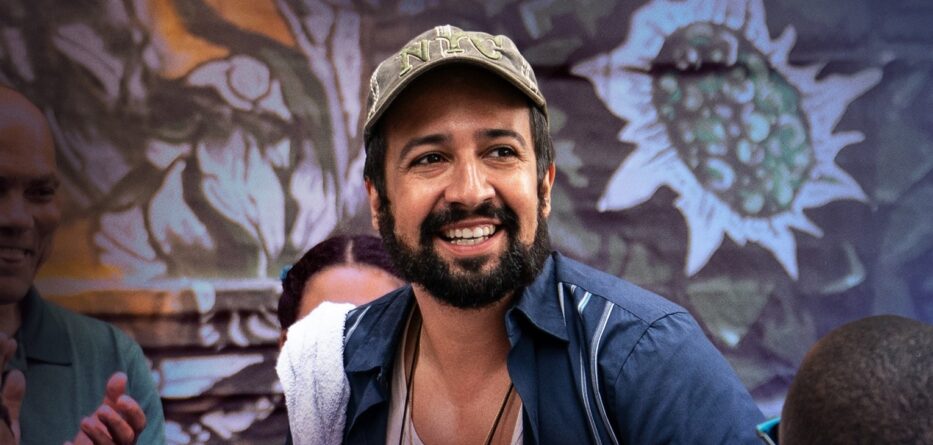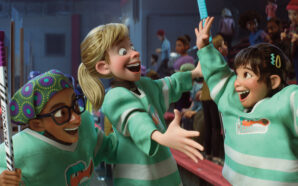Arturo Hilario
El Observador
To introduce the musical “In the Heights” would be to factually state it has several Tony Awards and a Grammy under its belt as well as near universal praise for its story exploring a community in the Washington Heights neighborhood of New York City.
As it’s set to take on the movie world when it releases its highly anticipated film adaptation June 10th in theaters and HBO Max, it would be prudent to add on to the facts that the cultural power of its story, its characters and its Latinidad are things that have slowly but surely allowed the face of the musical, Lin-Manuel Miranda, to become a superstar in the worlds of music, theater, and film.
By doing so he and the “In the Heights” book writer Quiara Alegría Hudes have also brought to front of the cultural zeitgeist the memories and narratives of Latinos, and their struggles and emotions are now big budget stories. They are not only drug dealers and spicy women tropes anymore – it’s instead stories that are truthful, passionate, heartbreaking and full of joy, like our cultura.
I had an opportunity to talk to Lin-Manuel Miranda over Zoom recently about his newest release and within that conversation you will find amazing anecdotes of his experiences from his early 20’s and being lovesick, to realizing he’d assisted in normalizing Latinos and Latino stories on Broadway years later.
If there’s one lead into the interview it’s this: because of his efforts, Miranda has cultivated not only the music and themes of “In the Heights” but cultivated Latino culture for the masses in a way that is catchy, realistic and profound.
To start off I wanted to know what it was like for you in this experience, to bring your stage production to film?
It was about 11 years Arturo. It was a long process and again, it was a bit of a mumble, you know, I mean, like a sort of one step forward, two steps back. The miracle and the hard part was actually getting a Latino story on stage to Broadway with a Latino creative team and Latino stars and telling our stories. That was the hard part. And I remember thinking, like, can we actually get the movie of this done sort of in the same spirit?
And we got sort of the Hollywood turnaround. That is very cliche. And I’m sure you’ve heard versions of the story before, of you run into this wall, the self-perpetuating wall of, “Well, there aren’t any Latino stars.” That was the line in 2009, 2010. And I remember thinking, “Well, if you don’t make any movies with Latino stars, it will never happen!” It’s a self-perpetuating cycle, but the short version is that version of the movie never got made and it took a lot of bouncing around.
Until one Quiara Alegría Hudes wrote a brilliant screenplay that I think really reimagined the show in a smart way that captures the spirit of it, and really that sense of community. And then we found a director who had a big vision of the movie and also, had, not for nothing, a track record of creating stars.
He did sort of the thing you dream about with “Crazy Rich Asians” – he created a lane where none existed. He made a big Hollywood movie starring Asians and Asian-Americans and some of them you’d heard of and some of them you’d never heard of, but now Henry Golding will go open a movie and Gemma Chan will go open a movie. And it was sort of like the thing we needed and were missing way back in the first go round of “In the Heights”.
So we sort of attacked “In the Heights” with a similar spirit. We said one, we really want to shoot it on location, which is more expensive, but there’s no other neighborhood that looks like our neighborhood, like these are pre-war buildings built around a fucking mountain because we’re the highest point in Manhattan. So they’re all curved and weird and the landscapes, you just you can’t recreate that a set. And John dreamed bigger for us than we were than we’re accustomed to dreaming.
We had been pitching the indie version of “In the Heights” for so long and just the, “Ay bendito, give us three million dollars and we’ll make it on the cheap.” And John was like, “No, these are everyday people, but their dreams are big. You wrote a big musical!” And so, I give him sort of credit for dreaming as big as he did, because that means our characters could to.
Jumping off of that, can you tell me a little bit about how you worked together with John? And, you know, he seems like a very, very kinetic director. So how did that work out with you guys collaborating?
Yeah, well, listen, John’s not Latino, but of the directors I met, I think he felt the most similar in spirit to both Quiara and I. He is first generation, like me and Q. He’s one of many kids. His dad came and started a business. He grew up running around in that business. Again, this is all stuff that we relate to as Latinos. And just like John, I related to it to very specifically.
And he really, I think, understood the hyphenate nature of the story, right, because this is a story written by two first generation kids whose parents are born somewhere else and every character is struggling with some version of ‘home’. What does ‘home’ mean if your parents weren’t born here? What does it mean, your language? Does it mean your culture? Does it mean your Christmas traditions? What are the things we pass on? And what are the things we sacrifice so that the next generation can do better?
I think he understood that on a molecular level. And so, we knew he was the right person to tell that story. And then when it came to sort of the big building blocks of the movie, that was, you know, I can point to different things, like he and Quiara were the ones who went on the location scout and saw Highbridge Park and were like, “[The song] 9600? Maybe. Here, in the pool. Maybe it’s a pool number?”
Again, I would never in a million years have dreamed of that. But it’s so much more dynamic and cinematic than setting it on the block, which is where it was kind of always set in all the script versions. But then we have this insane location on 175th Street and he maximizes it. So, he really kind of took every opportunity to cinematically dream bigger for these characters.
Now, since the story focuses on the Washington Heights neighborhood and now you have the tools of movie magic, how did you translate and try to keep the soul of that neighborhood and the original story while also adapting it to film with these effects and these incredible set pieces?
I mean, again, it begins with the decision to film in the neighborhood. The show is called “In the Heights”, the movie’s called “In the Heights”, you want it to be a movie that the residents who live there can be proud of. So, we always kind of purchased locally and we cast our extras locally. And I remember going to the extras casting call being like, “We’re going to fuck up your parking for like a month. And I’m genuinely sorry because I know what it’s like to have a location.”
You know, mostly just “Law & Order” comes this far uptown. But I know what it’s like to have the trucks fuck up the parking. But if we do this right, you know, we’re going to honor your block and we’re going to honor this neighborhood and it’s going to live forever. So, it began with just the parts of the neighborhood that were important to me and Quiara.
And, you know, I think filming Abuela Claudia walking through that 191st street tunnel, which is like a mile long, is so old it still says I.R.T. [Interborough Rapid Transit Company – closed in 1940] on the outside of it. For any neighborhood residents, it’s iconic because you have to walk through a mountain to get to the 1 train if you’re coming from the West Side. And for that to be this tunnel where she has this amazing, “This is your lifetime reckoning”, [it’s] beautiful.
And then there were moments that really surprised us. And again, it’s very hard to talk about this without crying. But that, John chose J. Hood Wright park to stage “When You’re Home”, that’s a little park we have on 175th street. My wife’s grandmother lived in a building next to that park her whole life. My father-in-law grew up there. And I remember taking Vanessa to the rehearsals and her just looking over and going, “Is my grandmother’s building going to be in the movie?” And like bursting into tears. And then I burst into tears.
Again, like that thing of honoring this place where we grew up, we’re both neighborhood kids. And so there’s the big moments and then there’s the everyday moments of, like this park we love that we walked through on our way to our kid’s pre-K every day, being in a big musical number.
Do you have a favorite scene from the original play that you could talk about and if that’s changed now that there’s film versions of all these musical numbers?
Yeah, the first thing that jumps into my head is “When the Sun Goes Down”, I have this bad habit that the last song I wrote was always my favorite. And “When the Sun Goes Down” is one of the last songs I wrote for the stage version of “In The Heights”. And what I love about it is it’s this sort of song of these people who are totally in love with each other, but circumstances are sending them apart and how wonderful that feels and how bittersweet that feels.
And in a lot of ways, it’s a very personal song. You know, when I when I wrote the first draft of the show in college, I was still with my high school girlfriend and we couldn’t figure out a way to be apart and we needed to be apart, but we didn’t know how to say it. In a lot of ways that song is the words I didn’t have when I was 19, 20 years old. So, again, like, that song just makes me cry because it feels like it’s weirdly connected to the spirit of the very first version.
Then John gets the idea to stage it on the side of a building, dancing up these fire escapes. And it’s so cinematic and so beautiful and I think unlocks the song even more. It’s something we never could have done. It’s literally something we could never have done on stage. But to me, feels like an ideal cinematic expression of that feeling when you’re in love. Gravity doesn’t exist.
Again, that’s an example of John just dreaming and completely reimagining something that I could never have imagined. It’s really kind of incredible.
I wanted to ask on the eve of “In the Heights” releasing in theaters and HBO Max, how do you feel about the legacy of this thing you wrote years ago and how far it’s come and how it will be viewed not only by a musical theater audience, but to the whole world, anyone that can stream or go to a theater.
Yeah, it’s pretty overwhelming. I keep thinking about, I think it was it was either opening night on Broadway or near opening night on Broadway. We always did a prayer circle. The cast did a prayer circle in the basement. We’d hold hands, do a little prayer before we went on stage. And one night one of our actors kind of said, “I just want to say something. I’m here because Priscilla Lopez is here and because Priscilla Lopez opened so many doors for us as a Latino performer and made a way where there sort of is no way.”
And everyone’s crying and Priscilla is actually not crying. She kind of just took it very graciously and we said our little prayer. She was standing next to me in the circle. She squeezed my hand and she looked at me and she said, “When you throw a rock in the pond, you have no idea the ripples that are going to come back to you.”
Now, I was 28 years old when she told me that. And the ripples that continue to come back to me, not only from this Latino community that gets to see themselves on screen in this big way, but so many actors and everyday people I talk to who say, “Nina was the first time I felt seen in a musical, I was the first of my family to go to college. And that storyline spoke to me.”
Actors I meet say, “‘In the Heights’ was my first Broadway musical.” So for them, a stage full of Latino characters is normal. That’s just what a Broadway musical looks like to them. Whereas for me it was very radical and something I hadn’t seen, which is what Quiara and I said about making it. So, the fact that is folks’ entry point into what this art form can be and the stories it will inspire are really what are exciting to me.
And last question, thanks again. Well why should people go check out “In the Heights”?
Oh, I don’t know. You know, I’m obviously biased because it’s something I nurtured from just being young and Latino and wanting a life in this business and not knowing any other way than to make the thing I thought was missing, to it you know, becoming this really beautiful film that I think speaks to how we can be represented on screen when we represent ourselves with joy and with conviction and with purpose. You know, I think when others write us, sometimes we get the 11 o’clock news version of us.
It’s us at our worst, it’s crime and it’s drugs. And when we write about ourselves with joy, there’s just more stories. There are richer stories. I think everyone in the movie is so good. There’s so many movie stars in here that you just haven’t heard of yet. You know, Leslie Grace is a movie star. Melissa Barrera is a movie star. Anthony Ramos is a movie star. Corey Hawkins is a movie star. So I’m just really excited for the world to see it, and I hope they see it.






